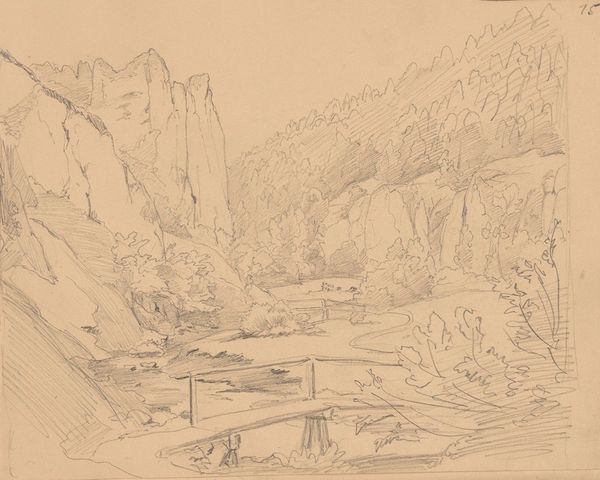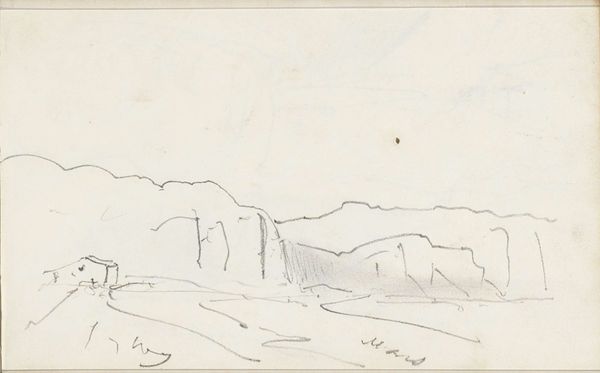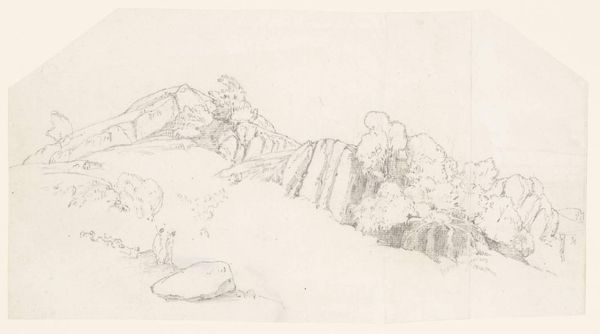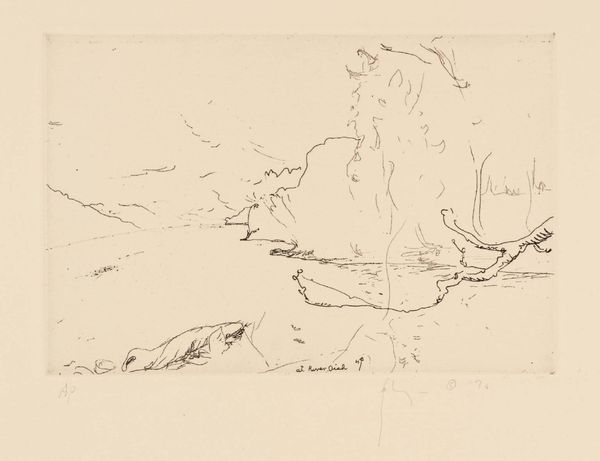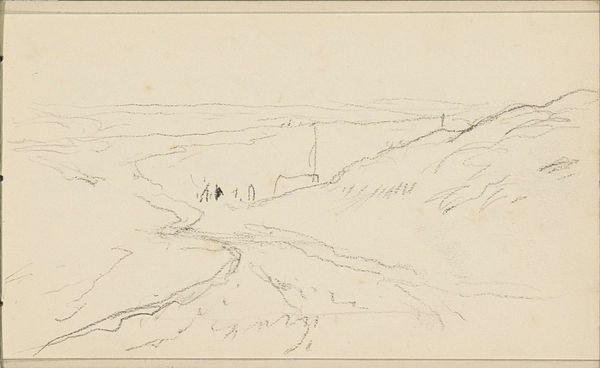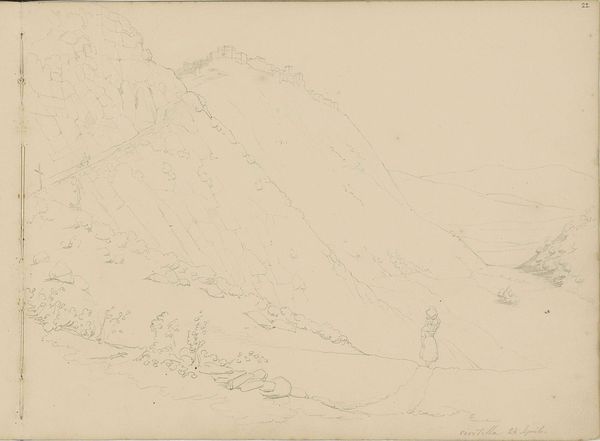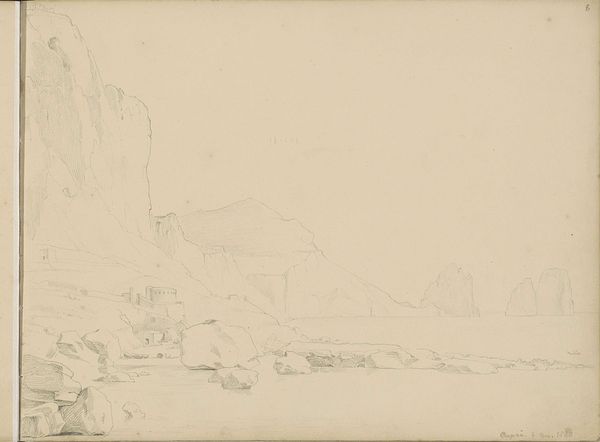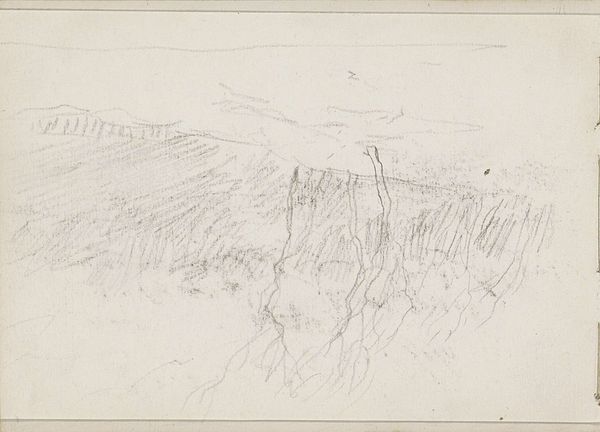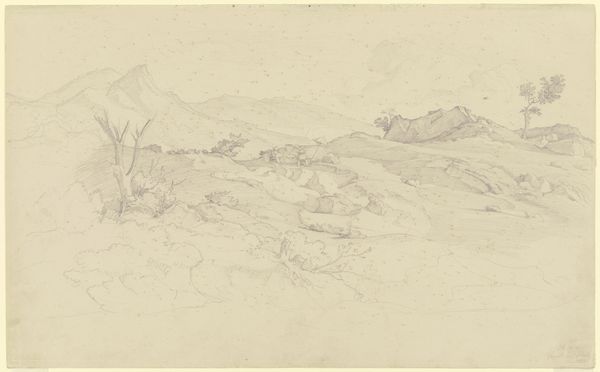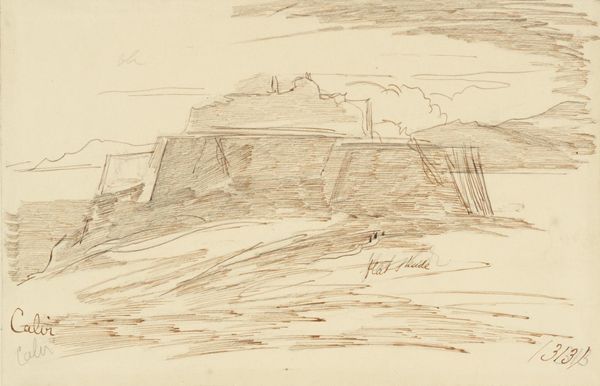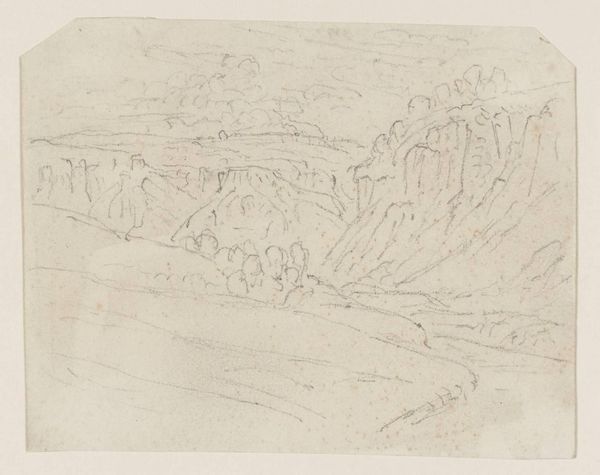
Copyright: Public Domain: Artvee
Curator: I'm drawn to the open quiet of this pencil drawing; it feels intimate. Editor: There's a somber mood for me; desolate, maybe. But let’s bring in some context: what exactly are we seeing here? Curator: This is a sketch by Jόzef Simmler entitled "Landscape sketch from the Ogrodzieniec area," created in 1860. He captured the Polish countryside. Editor: Knowing the date and locale makes a big difference. Mid-19th century Poland was a place of immense political turbulence and cultural struggle against partition. Does this landscape evoke national identity in any way? Curator: In sketches like these, the stark geological features suggest the resilience and endurance of the land. But those can carry meanings of a yearning for a stable, free homeland, as opposed to a romanticized natural power. Editor: Simmler was working in a visual language then: landscape could stand in for nationhood, especially during times of occupation or suppression. Look at how lightly he rendered the land – seemingly free for interpretation? Curator: He focuses on a contrast: fleeting and temporal life in tension against this formidable landmass that seems to absorb and transcend every human drama. Note how he contrasts texture – smooth plains against jutting rock faces? Editor: Exactly. And consider Simmler’s position in the cultural sphere. Who was he showing these landscapes to? Did the public understand the symbolism you are pointing out? Or was it largely an elite, intellectual understanding? Curator: Perhaps it operated on multiple levels. Anyone could appreciate the aesthetic value, the composition. The visual shorthand to more complex ideas likely resonated especially deeply with the educated classes who engaged with broader Romantic nationalism. Editor: So a dual message encoded in a seemingly simple landscape. Curator: Precisely. It prompts us to see landscape not just as scenery, but as a repository of cultural memory. Editor: Yes – this little drawing invites big questions about the intersection of art, nation, and cultural identity. A starkly effective message, perhaps.
Comments
No comments
Be the first to comment and join the conversation on the ultimate creative platform.
